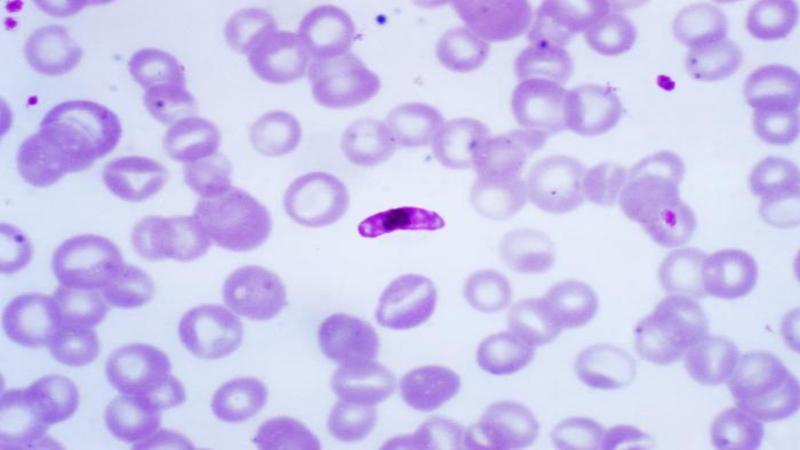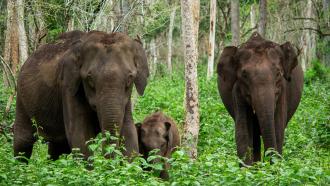
Avian malaria or bird malaria has been linked to significant declines in captive and wild birds, such as penguins and Hawaiian forest birds. Common blood parasites, like Plasmodium that spread through mosquitoes and Haemoproteus that are transmitted through louse flies and biting midges, cause the disease in birds. Despite their inherent similarity, these parasites have very different implications from a conservation perspective. For example, islands like Hawaii and New Zealand have lost a large number of wild birds due to Plasmodium infection. On the contrary, Haemoproteus has not been associated with large-scale mortalities in wild birds and this parasite is absent from some island systems.
In a new study, an interdisciplinary team of researchers from the University of Georgia, USA, Indian Institute of Science Education and Research, Tirupati and National Centre for Biological Sciences, Bengaluru, have investigated which factors influence the occurrence of avian malaria in the continental Shola sky islands of the Western Ghats. Sky islands are isolated mountain-tops surrounded by a ‘sea’ of deep valleys, similar to oceanic islands surrounded by sea.
“The Shola sky islands were an ideal system to examine the disease dynamics of avian malaria because the birds here have probably shared a long coevolutionary history with both Plasmodium and Haemoproteus,” says Dr Guha Dharmarajan.
He is a researcher at the University of Georgia’s Savannah River Ecology Lab and the senior author of this study published in the journal Proceedings of the Royal Society B.
The researchers studied 1,177 birds belonging to 28 species from multiple sites across four major geographical regions in the Shola sky islands — Bababudan and Banasura hills, Nilgiri hills, Annamalai-Palani-Highwavys hills and Ashambu hills. These regions are separated by three biogeographic barriers — the Chaliyar river valley, the Palghat Gap and Shencottah Gap. After extracting the DNA from the blood samples of the captured birds, the researchers looked for both parasites, using genetic tools. They found that 490 birds, belonging to 24 species, were infected. Plasmodium was found in 19 species while Haemoproteus was found in 20 species.
“Sampling almost the entire sky island bird community and studying their parasites allowed us to better understand how the two groups of parasites are transmitted across different bird species, which is often not possible with single species studies,” says Pooja Gupta, the lead author of the study.
The prevalence of parasites differed for each host species. For example, the Indian white-eye (Zosterops palpebrosus) had a prevalence of about 77.1% for Haemoproteus species and the common blackbird (Turdus merula) had about 29% prevalence for Plasmodium species. On comparing the DNA sequences, the study found that 18 Plasmodium and 29 Haemoproteus genetic strains were present, out of which, 10 and 24 genetic strains from each of the genus were new and endemic to the Shola sky islands.
The researchers also studied if a single parasite genetic strain had infected multiple bird species, or if multiple parasite strains infected a single bird species. They found that a small number of Plasmodium strains infected many, diverse bird species, and many of the Haemoproteus strains infected just one or a few related bird species. Indicating that Plasmodium is a generalist parasite, while Haemoproteus is a specialist one.
Interestingly, a large number of Plasmodium strains were recovered from the common blackbird, which could be acting as a reservoir of Plasmodium species. When birds with generalist parasites like Plasmodium are introduced to new regions, they could spread the parasites into naive bird communities, warn the researchers. Incidents of such parasite introduction via blackbirds have already been seen in the islands of New Zealand and Azores.
On analyzing the dynamics of co-evolution of birds and blood parasites, the researchers found that, in the case of Haemoproteus species, the evolution of parasite strains closely matched that of their bird hosts. The researchers attribute this phenomenon to co-speciation, where the evolution of one species (the host) dictates that of an associated species (the parasite). In contrast to the patterns in the specialist parasite, Haemoproteus, the researchers found no support for co-speciation in the case of Plasmodium, the generalist parasite.
The researchers also studied how the genetic structure of the parasites is affected by barriers such as ecological and phylogenetic distances of the host. The host ecological distance is a measure of dissimilarity between ecological traits like habitat, roosting type and elevation range across bird species. Host phylogenetic distance is a measure of genetic differences between two species from their common ancestor. The study also considered the role of the biogeographic barriers such as the three gaps, distance between the bird sampling sites, and climatic factors like elevation differences between sampling sites.
The researchers found that, for Plasmodium species, there were variations in the genetic structure due to biogeographic gaps and the distance between sampling points. On the other hand, the genetic structure of Haemoproteus species changed due to host phylogenetic distance, host ecological distance and elevation difference between the sites.
“Our research shows that some bird species carried more similar parasite strains (e.g. Plasmodium) because they shared the same habitat and were neighbors whereas other birds were infected with similar parasite strains (e.g. Haemoproteus) because of their shared ancestry and ecological similarity,” says Pooja Gupta.
“Interestingly, we found that some bird species, such as Sholicola (sholakilis) and Montecincla (chilappan), which have been genetically isolated by the biogeographic gaps for about 4-5 million years, carried similar Haemoproteus genetic strains,” says Dr Dharmarajan. “This suggests that these parasites colonized their hosts even before they got isolated and since then have maintained their genetic similarity.”
Besides, the researchers also found that Plasmodium strains in Shola sky islands did not all group together; instead, they were a random subset of all other Plasmodium strains found globally. But, the opposite was true for Haemoproteus strains. The research indicates that as Plasmodium strains are generalists and not limited by host phylogenetic distance, they are more likely to switch to new hosts and emerge as novel infections in previously unexposed bird communities.
The study shows that geographic barriers and genetic differences among the bird species drive the two groups of blood parasites to infect birds in different ways.
“The patterns observed in our study could help to gain a broader understanding of the evolutionary drivers of other emerging infectious diseases of humans and wildlife,” signs off Dr Dharmarajan.
This article has been run past the researchers, whose work is covered, to ensure accuracy.






